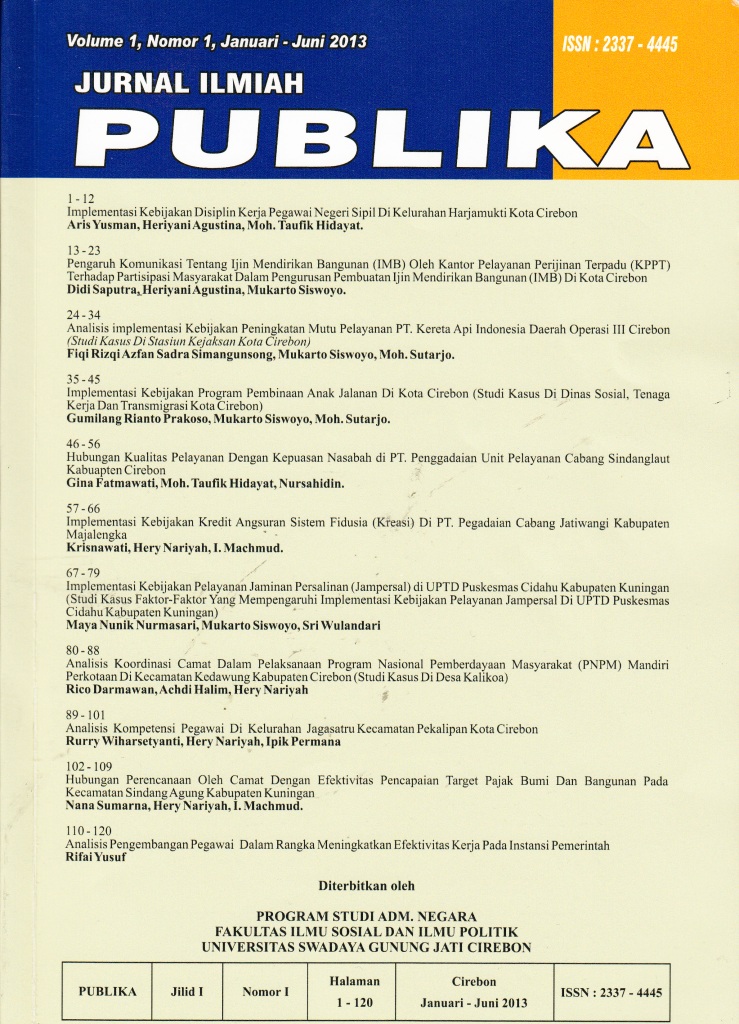IMPLEMENTASI KEBIJAKAN DISIPLIN KERJA PEGAWAI NEGERI SIPIL DI KELURAHAN HARJAMUKTI KOTA CIREBON
DOI:
https://doi.org/10.33603/publika.v1i1.584Abstract
he title of the study is: "Discipline Policy Implementation Working Civil Harjamukti In
Cirebon City Village". The research was conducted with the aim to describe the
implementation of the policy discipline of civil servants working in the Village
Harjamukti Cirebon. The background of this research is the low labor discipline of civil
servants in the Village Harjamukti Cirebon, it is evident from the lack of understanding
of the civil servants of Government Regulation No. 53 of 2010 Concerning Discipline of
Civil Servants. This study aimed to determine the extent of policy discipline of civil
servants working in the Village Harjamukti Cirebon city and what are the barriers that
exist in implementing the policy of labor discipline civil servants. The method I used is
descriptive qualitative methods, the research took place in the Village Harjamukti
Cirebon, while the informants in this study were all civil servants ranging from village
heads, secretaries, Kasie and executive staff in the Village Harjamukti Cirebon. In the
research results that work discipline has not been done optimally, seen from the factor of
communication where there are employees who do not understand the information
provided by the village chief and still there are employees who do not follow brefing
staff, sources of factors are considered less where employees have less kehlian and skills
in their respective fields and there are employees with disabilities to operate a computer,
and the disposition of the factors considered sufficient but not optimal where Ward has
provided motivation but there are lazy employees and delaying the work, of the factor
structure of bureaucracy feels pretty good where the employee has to understand and
execute the existing working procedures and duties in accordance with their respective
fields.
The theory of policy implementation that is used is the theory of Edward III, which
consists of 4 factors: 1. Communication, 2. Sources,3. Disposition, 4. Bureaucratic
structures
Downloads
Published
Issue
Section
License
The Authors submitting a manuscript do so on the understanding that if accepted for publication, copyright of the article shall be assigned to Jurnal Ilmiah Publika Prodi Administrasi Publik. Universitas Swadaya Gunung Jati as publisher of the journal. Copyright encompasses rights to reproduce and deliver the article in all form and media, including reprints, photographs, microfilms, and any other similar reproductions, as well as translations.
Jurnal Ilmiah Publika, Universitas Swadaya Gunung Jati and the Editors make every effort to ensure that no wrong or misleading data, opinions or statements be published in the journal. In any way, the contents of the articles and advertisements published in Jurnal Ilmiah Publika are the sole responsibility of their respective authors and advertisers.










